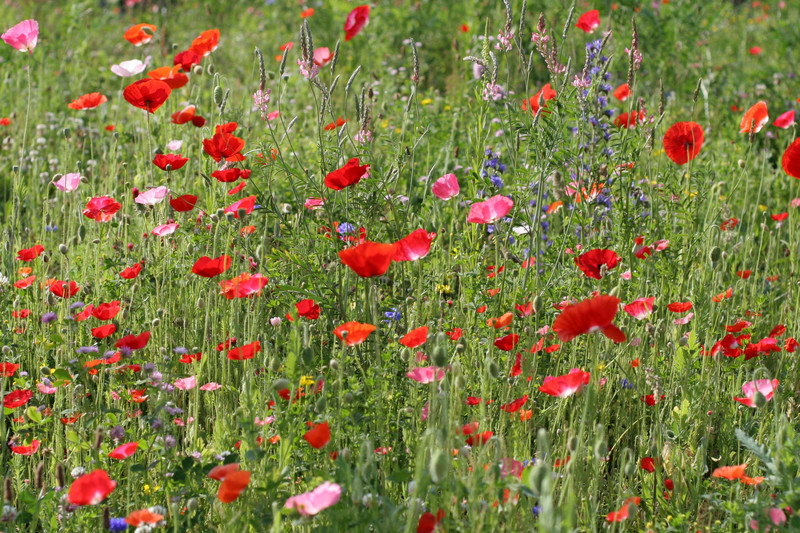"10 biotope concept" in Action

Over 400 new ecological zones on 40 Demeter farms in the Lake Constance region: this impressive result is the outcome of a collaboration between the Initiative für neue Kulturpflanzen e. V. and the producer association Demeter MilchBauern Süd. In order to promote biodiversity, the cooperation partners are guided by Dr. Hans-Christoph Vahle's "10 biotope concept". In it, the plant sociologist defines ten characteristic areas such as light lawns, stone walls, farmyard ponds and wet meadows. The aim is to create diverse habitats around the farms for native wild and cultivated plants and wildlife.
The farms, which market their dairy products under the name Demeter Heumilch Bauern, are located in Upper Swabia, the Lake Constance district, Linzgau and Allgäu. Thanks to state funding, 30 farms in Baden-Württemberg were able to upgrade their first areas as species-rich biotopes by the end of 2022. Ten more farms in Bavaria started the project at the beginning of 2024 with financial support from SAGST. All measures are being implemented in close cooperation with the participating farmers. Holger Meyer zur Müdehorst, whose farm in Heiligenholz (Lake Constance district) is also part of the project, which he is coordinating, plays a central role. The initiative is working closely with the Academy for Applied Vegetation Science in Witten (NRW), which was founded by Vahle. Together, inventories of the flora and fauna are carried out, planting and maintenance concepts are developed and implementation is monitored.
While similar projects are usually initiated by nature conservation groups, farmers are the driving force here. One of them is Max Löcherer, who keeps dairy cows at an altitude of around 800 meters in Lengenwang (Ostallgäu district). The sustainable management of the meadows also includes the gentle and insect-friendly mowing of certain areas with a cutter bar mower. More than 60 rare plant species have now established themselves there, including the meadow knapweed, an important food plant for the endangered dark meadow knapweed blue butterfly. The butterfly is considered a key species endangered throughout Europe and inhabits extensively used wet grassland habitats.
"A special feature is the combination of ecological measures with individual and community awareness-raising," emphasizes SAGST project manager Markus Kleikemper. "The farmers' intensive engagement with the biotope areas and their plant communities not only promotes nature conservation, but also creates new impetus for social interaction - an approach that could set a precedent." An accompanying research project is investigating and documenting this connection through interviews at the beginning and end of the project phase.
